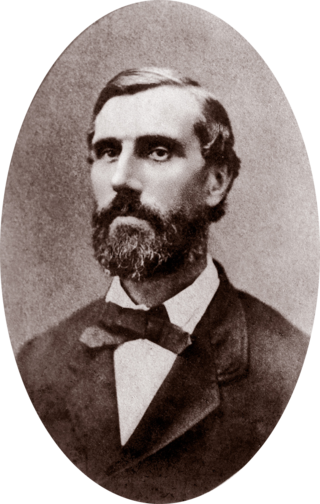
Hawaii is the largest island in the United States, located in the state of Hawaii. It is the southeasternmost of the Hawaiian Islands, a chain of volcanic islands in the North Pacific Ocean. With an area of 4,028 square miles (10,430 km2), it has 63% of the Hawaiian archipelago's combined landmass. However, it has only 13% of Hawaiʻi's population. The island of Hawaiʻi is the third largest island in Polynesia, behind the north and south islands of New Zealand.

Kailua-Kona is an unincorporated community and census-designated place (CDP) in Hawaii County, Hawaii, United States. It is also known as Kailua, as Kona and as Kona Town. Kailua-Kona is the second-largest settlement on the island of Hawaii and the largest on the island's west side, where it is the center of commerce and the tourist industry. Kailua-Kona is served by Kona International Airport, just to the north in the adjacent CDP of Kalaoa. The population was 19,713 at the 2020 census, up from 11,975 at the 2010 census.

Kealakekua Bay is located on the Kona coast of the island of Hawaiʻi about 12 miles (19 km) south of Kailua-Kona. Settled over a thousand years ago, the surrounding area contains many archeological and historical sites such as religious temples (heiaus) and also includes the spot where the first documented European to reach the Hawaiian islands, Captain James Cook, was killed. It was listed in the National Register of Historic Places listings on the island of Hawaii in 1973 as the Kealakekua Bay Historical District. The bay is a marine life conservation district, a popular destination for kayaking, scuba diving, and snorkeling.

Kona coffee is the market name for coffee cultivated on the slopes of Hualalai and Mauna Loa in the North and South Kona Districts of the Big Island of Hawaii. It is one of the most expensive coffees in the world. Only coffee from the Kona Districts can be described as "Kona." The weather of sunny mornings, clouds or rain in the afternoon, little wind, and mild nights combined with porous, mineral-rich volcanic soil create favorable coffee-growing conditions. The loanword for coffee in the Hawaiian language is kope, pronounced [ˈkope].

The Amy B. H. Greenwell Ethnobotanical Garden is a Hawaiian botanical garden near Captain Cook, Hawaii in the Kona District on the Big Island of Hawaii. Undergoing a change in management, the gardens were closed to the public from 2016-2019. It is now operated by Friends of the Garden and is open to the public Thursday thru Sunday from 9 am to 2 pm, with free admission.

Kamakahonu, the residence of Kamehameha I, was located at the north end of Kailua Bay in Kailua-Kona on Hawaiʻi Island.

Keāhole Point is the westernmost point of the island of Hawaii. The Kona International Airport was moved here from directly north of the town of Kailua-Kona in 1970, when the previous smaller airstrip was converted into the Old Kona Airport State Recreation Area. The name comes from Ke ʻāhole since the ʻāhole fish was found nearby.

Hale Halawai O Holualoa is the former name of Living Stones Church located in the Kona District on the Big Island of Hawaii.

Keauhou Bay is a historic area in the Kona District of the Big Island of Hawaiʻi. The name comes from ke au hou which means "the new era" in the Hawaiian Language.

The Kuamoʻo Burials is an historic Hawaiian burial site for warriors killed during a major battle in 1819. The site is located at Kuamoʻo Bay in the North Kona District, on the island of Hawaiʻi, United States.

Hōlualoa Bay is a historic area between Kailua-Kona and Keauhou Bay in the Kona District of the Big Island of Hawaiʻi. The community now called Hōlualoa is uphill from this bay. The name means "long slide" in the Hawaiian Language, from the long trail that went from a forest on the slopes of Hualālai, to a site where the logs were made into canoes into this bay where a large royal building complex was built over several centuries.

Kona Coffee Living History Farm is located on the Daisaku Uchida Coffee Farm, in the Kona District, on the Big Island of Hawaiʻi. The 5.5-acre (22,000 m2) historic Kona coffee farm was established in 1900.

Pua'a-2 Agricultural Fields Archeological District is a historic site of Ancient Hawaii agriculture on the Big Island of Hawaiʻi.

The Waiākea Mission Station was the first Christian mission on the eastern side of the Island of Hawaiʻi. Also known as the Hilo Station, the latest structure is now called Haili Church.

The Daifukuji Sōtō Mission is a Zen Buddhist temple on the island of Hawaiʻi established in 1914.

Kahikolu Church is one of only two stone churches from the 19th century on the island of Hawaii. It was built from 1852–1855 on the site of an earlier building known as Kealakekua Church that was built around 1833 in the Kona district.

John Davis Paris was an American Christian missionary to the island of Hawaii. Coming to the island by accident, he supervised construction of several historic churches, some of which survive today.
Hawaii is one of the few U.S. states where coffee production is a significant economic industry – coffee is the second largest crop produced there. The 2019–2020 coffee harvest in Hawaii was valued at $102.9 million. As of the 2019-2020 harvest, coffee production in Hawaii accounted for 6,900 acres of land

Henry Nicholas Greenwell was an English merchant credited with establishing Kona coffee as an internationally known brand. His family became major land-holders in the Kona District of the island of Hawaiʻi. The Greenwell Store is now a museum and historical center.



















